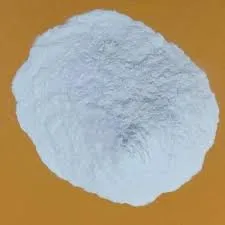
Medi . 16, 2024 17:41 Back to list
HPMC Synthesis
Understanding HPMC Synthesis A Gateway to Versatile Applications
Hydroxypropyl Methylcellulose (HPMC) is a significant non-ionic cellulose ether that is widely utilized in various industries, including pharmaceuticals, food, cosmetics, and construction. It is synthesized through the modification of cellulose, a natural polymer derived from plant cell walls. The synthesis of HPMC involves the reaction of cellulose with propylene oxide and methyl chloride under alkaline conditions. Understanding the synthesis process and the resulting properties of HPMC can provide insights into its multifaceted applications.
Understanding HPMC Synthesis A Gateway to Versatile Applications
One of the most remarkable characteristics of HPMC is its solubility in water. Depending on the ratio of hydroxypropyl and methoxy groups, HPMC can be tailored to be either soluble or insoluble in water. This property is essential for various applications, particularly in the pharmaceutical industry, where HPMC is often used as a binder and film-forming agent in tablet formulations. Its ability to form gels and enhance the stability of active ingredients makes HPMC a preferred choice for drug delivery systems.
hpmc synthesis

In the food industry, HPMC serves as a thickening and emulsifying agent. It is frequently used in the production of sauces, dressings, and baked goods, where it helps improve texture and shelf life. The functionality of HPMC in food applications stems from its capability to maintain moisture and prevent separation of ingredients, thereby enhancing the quality of food products.
Moreover, HPMC's versatility extends to the cosmetic industry, where it is used in various formulations, including lotions, creams, and gels. Its film-forming properties contribute to the adhesion of products to the skin, while its moisturizing characteristics help improve the skin's overall feel and appearance.
In construction, HPMC is employed as a thickener in cement-based products and as a water-retention agent in mortars and plasters. Its effectiveness in enhancing the workability and performance of these materials is critical for ensuring durability and strength in construction applications.
In conclusion, the synthesis of HPMC is a pivotal process that drives its extensive applicability across various industries. By altering the degree of substitution during synthesis, manufacturers can tailor HPMC to meet specific needs, making it an invaluable compound. As industries continue to innovate and expand, the relevance of HPMC is expected to grow, paving the way for enhanced product performance and sustainability. Its multifaceted nature not only showcases the significance of chemical modifications but also underscores the potential for future advancements in materials science.
-
Unlocking the Benefits of HPMC Products: A Gateway to Versatile Applications
NewsAug.07,2025
-
Unleashing the Potential of HPMC Ashland: A Comprehensive Look
NewsAug.07,2025
-
Tile Bonding Cellulose: The Key to Superior Adhesion and Durability
NewsAug.07,2025
-
Hydroxypropyl Methylcellulose Powder: The Versatile Component in Modern Pharmaceuticals
NewsAug.07,2025
-
Hydroxyethyl Cellulose: The Versatile Solution for Various Industries
NewsAug.07,2025
-
Hydroxyethyl Cellulose (HEC): The Versatile Polymer for Various Applications
NewsAug.07,2025







